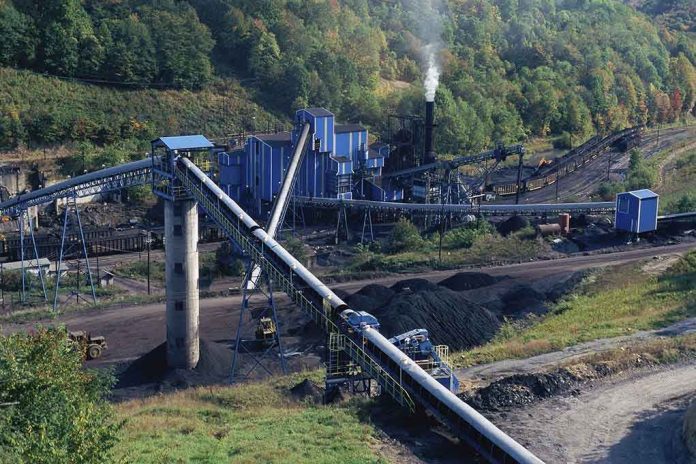
A U.S. Embassy avoidance order six months after a Chinese-owned mine’s spill signals lingering carcinogenic hazards despite official claims the river is “under control.”
Story Snapshot
- U.S. personnel were told to avoid northern Zambia near Kitwe over newly identified hazardous and carcinogenic substances.
- A February 2025 tailings failure sent acidic, metal-laden waste into waterways feeding the vital Kafue River.
- Zambia suspended the mine and says mitigation is working, but downstream fish kills and water shutdowns drove public alarm.
- The Kafue basin supports millions, magnifying health, food, and economic risks if contamination persists.
U.S. Advisory Versus ‘Under Control’ Assurances
U.S. Embassy officials ordered government personnel to avoid or leave the Kitwe area after “new information” indicated hazardous and carcinogenic substances remain near the Sino-Metals Leach Zambia operation, underscoring ongoing risk months after the spill. Zambian authorities say mitigation is progressing and the situation is under control, presenting a sharp contrast between diplomatic caution and domestic reassurance. The advisory elevates scrutiny of sampling transparency, exposure pathways, and remediation pace while communities seek clear, public data.
Reports indicate the February 18, 2025 failure released roughly fifty million liters of acidic process liquor loaded with dissolved solids and heavy metals into tributaries linked to the Kafue River. Immediate impacts included a shutdown of Kitwe’s municipal water supply and observed fish kills far downstream. The Engineering Institution of Zambia tied the disaster to tailings failure, while officials warned residents against consuming aquatic life. These details point to acute toxicity initially and plausible longer-term metal risks without sustained cleanup and monitoring.
Why This Matters for Health, Food, and Water Security
The Kafue basin sustains a large share of Zambia’s population and agriculture, and supplies drinking water to major urban centers. Acid neutralization using lime can reduce immediate pH-driven toxicity, but it does not eliminate heavy metals that can persist in sediments, bioaccumulate in fish, and infiltrate groundwater. The combination of municipal supply disruption, downstream die-offs, and a continuing U.S. avoidance order suggests residual contamination concerns that merit open, routine water-quality reporting and independent verification across key intakes and wells.
Officials suspended the mine, stated the operator would cover cleanup, and deployed neutralization via air force and on-water efforts. Company leaders apologized and pledged to restore the environment. Those actions track typical first-response steps after acid spills. However, credible remediation requires more than neutralization: metal immobilization, sediment management, transparent timelines, and long-horizon monitoring are essential. Without disclosed contaminant lists and concentrations, citizens cannot fairly judge risk, and trust erodes around claims that conditions are safely “under control.”
Diplomatic, Regulatory, and Accountability Pressures
The U.S. advisory adds external pressure for data disclosure and rigorous cleanup benchmarks. Zambia’s need to balance public health with foreign investment complicates enforcement against a Chinese-majority-owned operator. Clear penalties, cost recovery, and public reporting would deter future lapses and reassure affected communities. Sector-wide, tailings governance, emergency preparedness, and third-party audits will likely tighten. The episode will shape expectations for Chinese mining due diligence, with legal exposure tied to compensation, ecosystem recovery, and long-term health surveillance.
Key uncertainties remain. Officials have not released a definitive list of the carcinogenic substances cited by the embassy, nor comparative readings against Zambian or WHO standards at municipal intakes and downstream communities. The spatial extent of contamination and sediment-bound metal loads is similarly unclear. Independent sampling and publication of time-series results would reduce speculation, guide fisheries advisories, and inform decisions about dredging, stabilization, and agricultural safeguards along sensitive reaches of the basin.
What Informed Citizens Should Watch Next
Watch for publication of the embassy’s full alert language and any matching government sampling updates. Track whether the operator funds comprehensive remediation plans addressing sediment metals, not just acidity. Look for continuous monitoring at intake points serving Kitwe and downstream towns, plus transparent fish tissue testing tied to consumption advisories. Finally, follow regulatory proceedings that set precedents for tailings safety across the Copperbelt, where strong enforcement can prevent repeats and protect water, livelihoods, and public health.
Zambia Insists Chinese River Poisoning 'Under Control' as U.S. Orders Personnel Away https://t.co/qTZl35xl89
— ConservativeLibrarian (@ConserLibrarian) August 12, 2025
For readers concerned about government overreach and foreign influence, the central issue is accountability anchored in facts: independent water data, enforceable cleanup obligations, and clear communication to families who rely on the Kafue. A policy approach that prioritizes transparency and consequences over platitudes respects community rights, safeguards self-reliance, and deters negligence—principles that align with limited government, rule of law, and stewardship expected by citizens who bear the costs when rivers are treated as waste ditches.
Sources:
Acid spill from Chinese-owned copper mine contaminates vital waterway in Zambia
2025 Sino-Metals Leach Zambia dam disaster
A river ‘died’ overnight in Zambia after an acidic waste spill at a Chinese-owned mine
6 months after Zambia mine spill, US Embassy orders personnel to leave area





